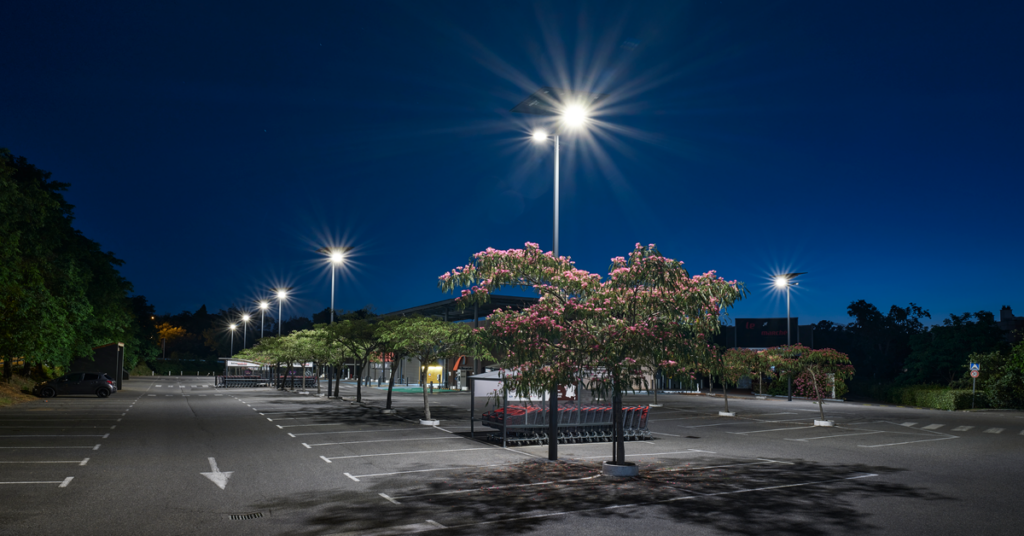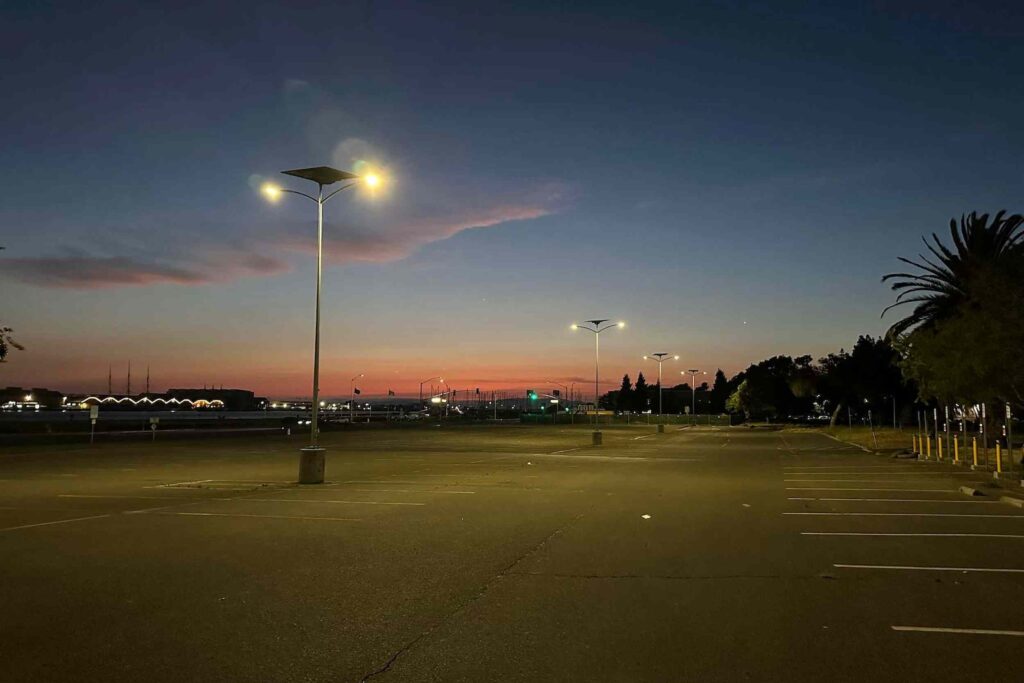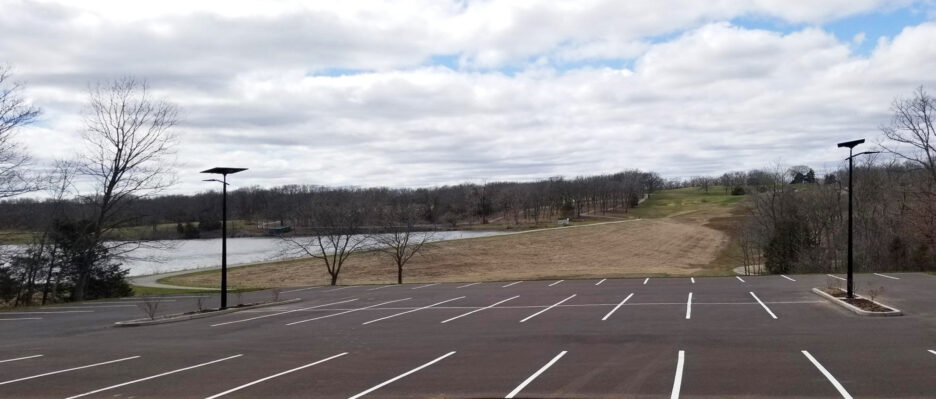Strong Foundations Start with the Right Pole
Every lighting system begins at ground level. While much of the focus tends to be on fixture output and energy efficiency, the pole itself is what makes that performance possible. In parking lots—where safety, spacing, and visibility must all work together—the wrong pole height or material can compromise even the best fixtures.
Pole height affects light distribution, fixture spacing, and the number of units required to meet illumination goals. Material choice influences durability, corrosion resistance, and how the system holds up over time in harsh environments.
With off-grid systems like Fonroche SmartLights, the pole takes on even more responsibility. It must support not only the fixture but also a solar panel, smart battery system, and withstand added wind load—all without trenching or wiring. That makes structural integrity, layout precision, and local conditions even more important during planning.
In short, the pole isn’t just a base—it’s an active part of the lighting system. And when designed well, it helps ensure the entire system performs reliably, night after night.
Table of Contents
Finding the Right Height for Your Parking Layout
Pole height plays a critical role in how effectively a parking lot is lit. It determines how far light reaches, how evenly it spreads, and how many fixtures are needed to achieve consistent coverage.
In general:
- 15–20 foot poles are well suited for smaller lots, pedestrian-heavy areas, or locations where lower mounting supports design aesthetics or glare control.
- 25–30 foot poles are typically used in larger lots—such as transit hubs, campuses, or commercial centers—where broader coverage is needed with fewer poles.
Choosing the right height isn’t just about coverage—it’s also about efficiency. Taller poles spaced correctly can reduce the number of lights required, while still meeting visibility and safety standards. But go too high or too low, and you risk either light pollution or uneven illumination.
With Fonroche SmartLights, pole height is selected as part of a full site analysis—factoring in layout, usage patterns, and fixture performance. The result is a lighting plan that balances visibility, efficiency, and long-term reliability, without overdesigning or overspending.

What to Consider When Choosing Pole Materials
The right material for a light pole isn’t just about strength—it’s about matching form to function across the entire system. Climate, site design, visibility needs, and fixture type all influence which option makes the most sense.
Steel is the most commonly used material for commercial poles. It’s strong, cost-effective, and versatile across heights. However, without proper coatings, it can be vulnerable to rust—especially in coastal, humid, or snowy regions.
Aluminum offers natural corrosion resistance, making it a good choice for long-term durability in harsh conditions. It’s also lighter than steel, which can simplify handling and reduce certain installation costs.
Composite and fiberglass poles are non-conductive and resilient in extreme weather, though they’re typically reserved for specialized sites with electrical isolation needs or aesthetic priorities.
In off-grid systems like Fonroche SmartLights, the pole must do more than hold a fixture. It also supports solar panels, integrated batteries, and smart controls—requiring a higher level of structural integrity. That makes material selection even more important, especially in high-wind or storm-prone areas.
Choosing the right pole isn’t just about what it’s made of. It’s about how well it performs under real-world conditions—and how long it stays that way.
Supporting More Than the Fixture
In conventional lighting systems, the pole’s main job is to elevate the fixture. But with off-grid solar systems, that role expands significantly.
Each pole must support a full lighting assembly, which may include:
- A solar panel positioned for year-round sun exposure
- A battery unit, either mounted on the pole or integrated into its base
- Smart controls and sensors for adaptive lighting behavior
That added weight, combined with environmental factors like wind, snow load, and seismic zones, increases the structural demands. In many cases, poles must meet or exceed AASHTO standards for safety and stability—especially on public or high-traffic sites.
Fonroche SmartLights are engineered with these realities in mind. Pole height, tilt angle, and mounting are all part of a coordinated design process that accounts for lighting requirements, environmental conditions, and installation efficiency. The result is a system that performs consistently without needing oversized or custom components. In off-grid lighting, the pole isn’t just passive support—it’s part of the system architecture.

Planning for Longevity and Low Maintenance
A well-chosen pole does more than support lighting—it reduces lifetime costs, simplifies maintenance, and withstands years of exposure without needing replacement.
That’s why planning ahead matters. Material, coating, height, and mounting method all affect how the pole ages over time. In harsh climates, corrosion or structural fatigue can shorten lifespan if specs aren’t matched to the site. For grid-tied systems, conduit access and electrical maintenance add complexity. For off-grid systems, durability means peace of mind.
Fonroche SmartLights are designed to minimize maintenance through structural integrity and system efficiency. By eliminating trenching, wiring, and utility dependency, they reduce not just up-front costs, but long-term risk. Poles are selected based on environmental demands, ensuring performance in storm zones, coastal conditions, and cold climates alike.
When pole design is aligned with real-world needs, the result is a lighting system that holds up—physically, financially, and operationally—for years to come.

